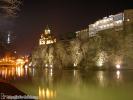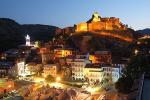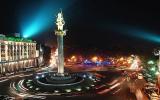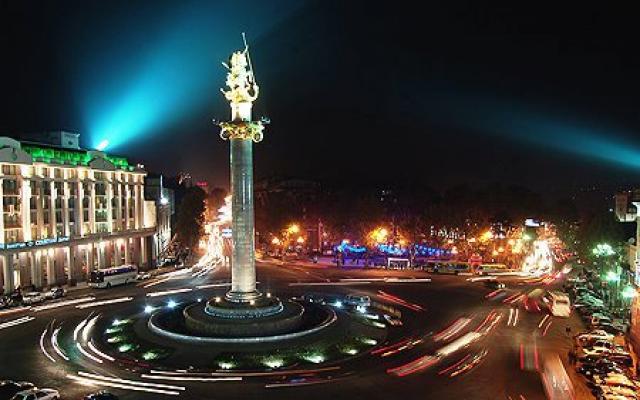|
|
||
|
|
||
|
|
||





Tbilisi has been the capital of Georgia for fifteen hundred years. Legend places the city's foundation at the feet of 'King Gorgasali's pheasant.' Back in the 5th century the kin, when out hawking, caught a pheasant on the wing that fell into one of the hot springs. Apparently by the time of retrieval the bird had been cooked and was ready to serve. Thus the king ordered the city to be built around the spring. The capital of Georgia Tbilisi stands on the banks of the River Mtkvari, in a valley surrounded by hills. The word Tbilisi derives from the Georgian 'tbili' which means warm - referring to the natural springs bubbling up from the earth near its 4th century Narikala fortress. Tbilisi is a major economic, transportation and cultural center - hub of the Southern Caucasus. In its Old Town the visitors will find a Mediterranean atmosphere and a harmonious architectural melange which reflects the wide variety of nationalities that down through the ages have made their homes in Tbilisi. Sights to visit include the Sioni Cathedral and the Anchiskhati Basilica in the Old Town. The Narikala Fortress, first established by the Persians in the fourth century AD and most recently rebuilt in the 17th century, is a good vantage point for views over the old city. The health-giving sulphur baths in a domed, oriental-style 19th-century bath house just north of the Metekhi Bridge were also frequented by writers such as Pushkin and Tolstoy. The Opera House, a splendid, neo-Moorish Opera building on Tbilisi's Rustaveli Avenue provides a lively calendar of events throughout the year. The Georgian State Museum on Rustaveli Ave houses a collection of icons, frescoes and porcelain, as well as an outstanding display of the "Gold of Colchis" jewellery. The Georgian State Art Museum, in the centre of town, includes paintings by the much-loved 19th-century artist Niko Pirosmani. The main shopping streets are Rustaveli and Chavchavadze Ave. High quality art shops, galleries and exhibition halls can be found in Vake and Vera districts, along Rustaveli Ave as well as in streets of the Old Town around Sioni church. Public buildings are mostly located on the Rustaveli Avenue. The open-air Museum of Ethnography, located in a western suburb on the way to the Kus Tba lake, has interesting examples of rural buildings and artefacts |
||











